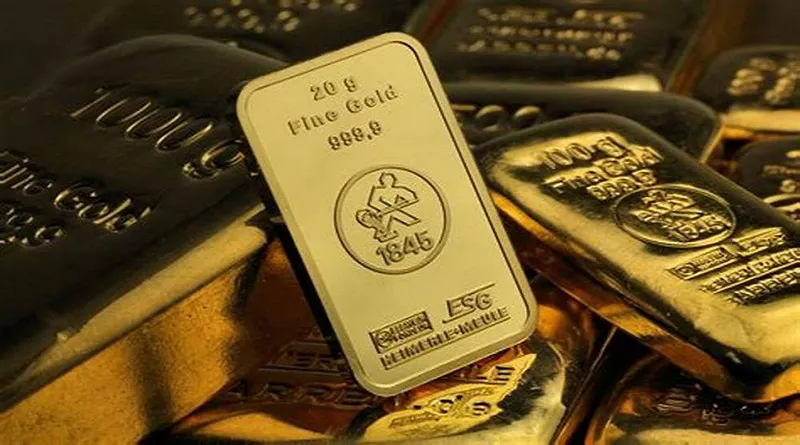The relationship between gold spot prices and currency exchange rates is a complex interplay that reflects the dynamics of global financial markets and the broader economic landscape. Gold, as a globally recognized precious metal, is often influenced by fluctuations in currency exchange rates, while currency exchange rates, in turn, can be impacted by shifts in the demand and supply of gold. Understanding the intricate connection between these two critical components is essential for investors, traders, and policymakers seeking to navigate the complexities of the financial world. In this comprehensive guide, we’ll explore the interplay between gold spot prices and currency exchange rates, highlighting the factors that influence their relationship and the implications for global economies and financial markets.
I. Gold as a Hedge Against Currency Fluctuations
Inverse Relationship with the U.S. Dollar
Gold spot prices often exhibit an inverse relationship with the value of the U.S. dollar. As the global reserve currency, the U.S. dollar plays a significant role in influencing the price of gold. When the value of the U.S. dollar depreciates, the price of gold tends to rise, and vice versa. This inverse relationship underscores gold’s role as a hedge against currency fluctuations, providing investors with a means to diversify their portfolios and protect their wealth from the adverse effects of currency devaluation.
Impact on Global Demand and Supply
Fluctuations in currency exchange rates can impact the global demand and supply of gold, influencing its price in the international market. A weaker domestic currency can lead to increased demand for gold in countries where the metal is considered a safe-haven asset or a stable store of value. Conversely, a stronger domestic currency may decrease the demand for gold, leading to a decline in its price as market participants seek alternative investment options.
II. Currency Exchange Rates and Gold Demand
Influence on Import and Export Dynamics
Currency exchange rates play a crucial role in shaping the import and export dynamics of gold-producing and gold-consuming countries. A depreciating domestic currency can make gold exports more competitive, leading to increased exports and higher foreign exchange earnings. Conversely, a stronger domestic currency can boost the purchasing power of gold-consuming countries, potentially stimulating the demand for gold as an investment or a luxury commodity.
Impact on Gold Mining and Production Costs
Currency exchange rate fluctuations can affect the costs associated with gold mining and production, particularly in regions where the local currency depreciates against major international currencies. A weaker domestic currency can lead to higher production costs, as mining companies may incur increased expenses for equipment, labor, and other operational inputs denominated in foreign currencies. This can ultimately influence the supply of gold and contribute to the price dynamics in the global gold market.
III. Global Economic and Geopolitical Factors
Safe-Haven Status in Times of Uncertainty
Gold’s status as a safe-haven asset is often amplified during periods of global economic uncertainty and geopolitical instability. Heightened geopolitical tensions, trade disputes, or economic crises can lead to increased demand for gold as a reliable store of value and a hedge against market volatility. This surge in demand can contribute to upward pressure on gold spot prices, especially in times when currency exchange rates are susceptible to rapid fluctuations.
Market Sentiment and Investor Confidence
Changes in currency exchange rates can influence market sentiment and investor confidence, subsequently impacting the demand for and price of gold. Shifts in monetary policies, interest rates, or trade agreements can trigger fluctuations in currency exchange rates, leading investors to reassess their investment strategies and seek alternative assets with greater stability and resilience. Gold, with its historical appeal and perceived value, can attract investors looking to diversify their portfolios and mitigate potential risks associated with currency-related uncertainties.
IV. Conclusion
The intricate interplay between gold spot prices and currency exchange rates underscores the multifaceted nature of the global financial system and the interconnectedness of various economic factors. Understanding the relationship between these two critical components can provide valuable insights for investors, policymakers, and market participants seeking to navigate the complexities of the global economy and make informed decisions about their investment strategies and risk management approaches.
FAQs
1. How do central bank policies impact the relationship between gold spot prices and currency exchange rates?
Central bank policies, including monetary easing, interest rate adjustments, and foreign exchange interventions, can influence currency exchange rates and subsequently impact the price of gold. Changes in central bank policies can trigger fluctuations in currency exchange rates, leading to shifts in the demand for and price of gold in the international market.
2. What are the implications of a strong U.S. dollar on gold prices and global trade?
A strong U.S. dollar can potentially dampen the demand for gold in international markets, as it makes gold relatively more expensive for investors holding other currencies. This can have implications for global trade dynamics, as countries that rely on gold exports may experience reduced demand and lower export earnings, impacting their overall trade balances and economic performance.
3. How can investors use the relationship between gold spot prices and currency exchange rates to diversify their portfolios effectively?
Investors can leverage the relationship between gold spot prices and currency exchange rates to diversify their portfolios effectively by incorporating gold as a hedge against currency-related risks and market uncertainties. By balancing their exposure to different asset classes and considering the impact of currency fluctuations on gold prices, investors can enhance the resilience and stability of their investment portfolios.
4. What are the long-term trends in the relationship between gold spot prices and currency exchange rates?
The long-term trends in the relationship between gold spot prices and currency exchange rates are influenced by various economic, geopolitical, and market-specific factors. While short-term fluctuations may reflect immediate market sentiments and developments, long-term trends often reflect broader economic cycles, global trade dynamics, and shifts in investor preferences for alternative assets. Investors should assess the historical performance and underlying drivers of this relationship to make informed decisions about their investment strategies and risk management approaches.

